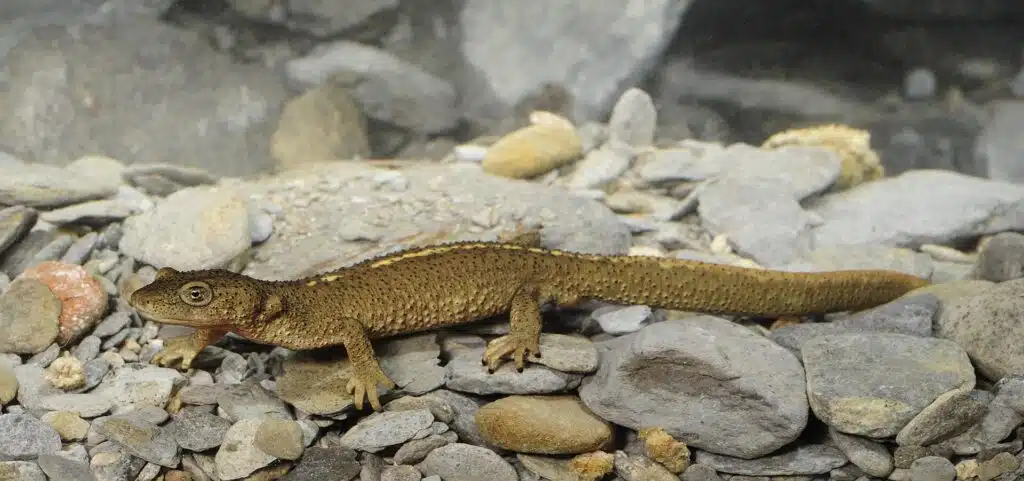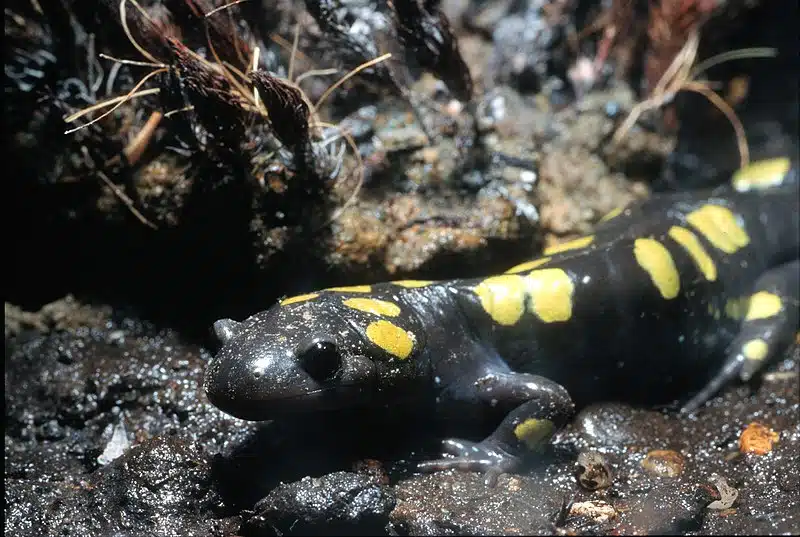Many people confuse the salamander and newt and it’s not surprising. These two have many similarities. Salamander vs Newt, what are the differences?
Whether you are thinking of owning one as a pet or you’re wondering what amphibian you just came across on your afternoon walk, here are some differences to help you tell them apart with ease.
When it comes to telling a salamander and newt apart you can look at the length of the tail and skin. Long tails with moist and soft skin is a salamander, while dry and rougher skin with external gills is a newt. Both make interesting and exciting pets, which is why these amphibians have grown into such popular pets around the world.
Salamander vs Newt – Comparision Chart
|
| Newt | Salamander |
|---|---|---|
About | A newt is a salamander in the subfamily Pleurodelinae | Salamanders are a group of amphibian with a lizard-like appearance |
Distribution | North America, North Africa, Asia, and Europe | Mostly in the Northern Hemisphere and Southern America |
Variety of Species | More than 100 species | About 655 species |
Habitat | Semiaquatic | Fully aquatic or semiaquatic |
Size | smaller than 20 centimeters | A few centimeters – 2 meters |
Skin | Skin is semipermeable and not as smooth as the salamander | Skin is thin, permeable and smooth |
Reproduction | Lay eggs in the water | Eggs in the water or on land depending on species |
Respiration | Breathe through skin | Breathe differently based on species |
Distribution and Habitat
Newt
Newts are semiaquatic and are members of the salamander family, but unlike the other members of the family, newts are semiaquatic, which means that they move between terrestrial and aquatic habitats.
There are more than one hundred newt species in North America, North Africa, Asia, and Europe.
Adults live in humid environments and return to water for breeding on an annual basis.
Salamander
Salamanders are fully aquatic or semiaquatic, depending on the species. They are a group of amphibians with a lizard appearance.
They have slender bodies, short limbs, and blunt snouts. You find salamanders in the Northern Hemisphere with species found in the Mediterranean, Himalayas, Amazon basin, and more.
There are six hundred and fifty species of salamanders with one third living in North America.
Related –Differences between lizards and salamanders.
Size and Lifespan
Newt
Newts are known to live up to fifteen years in captivity. With proper care and the right diet, the newt can live long and healthy lives.
When it comes to size, the newt is usually smaller than twenty centimeters or eight inches and weigh anywhere from 0.22 to 0.37 ounces, which is 6.3g to 10.6g.
Salamander
Salamanders look like tadpoles when they are juveniles, but they quickly grow legs. They often only become sexually mature when they reach three years.
They can live up to more than fifty years and grow anywhere from 12cm through to 1.2 meters in length.
Skin
Newt
Newts have semipermeable skin, a distinct tail, and four limbs. Their skin is not as smooth as the salamander.

Salamander
Salamanders have thin permeable skin that also acts as a respiratory membrane.
Skin glands discharge a mucus which keeps the skin moist, it also protects against infection, friction, and predators, making the salamander too slippery to grip.
Coloration
Newt
Newts rely on their skin color for camouflage. They range in color from black or brown to greens. Some have bright warning colors to show they are toxic and keep predators away.
Salamander
Salamanders are known for their colorations which include reds, yellows, and oranges which are usually combined with black.
It’s not uncommon for salamanders to show their brightly colored underside to scare off predators.
Respiration
Newt
Newts mostly breathe through their skin, but they do have lungs which are used when there isn’t enough oxygen in the water.
Salamander
Salamanders breathe differently based on species. Their respiratory function includes skin, lungs, gills, and membranes in the throat and mouth.
The lungs also vary based on species and differ in terms of structure and size.
Reproduction
Newt
Newts lay their eggs in the water. They breed in water. Males deposit a sperm packet on the floor and the female picks it up. Females can lay up to three hundred eggs which hatch after two to three weeks.
Salamander
Salamanders can reproduce in the water and on land, it can occur inside the female or through egg hatching. Ninety percent of salamanders fertilize internally.
There are three egg deposits done with a large number of small eggs in a position where predators are less likely to be found.
Others will lay a small batch of medium sized eggs, which they conceal in flowing water with eggs being guarded by the female.
In some cases, females hold onto the eggs inside her body until they hatch, once hatched they are added to water.

Diet
Newt
Newts tend to enjoy a varied diet of insects, worms, and slugs. When they are in the water, they hunt water snails, tadpoles, small crustaceans, and insects.
Salamander
Salamanders enjoy a carnivorous diet where they prey on slugs, snails, and worms. Larger salamanders are known to enjoy insects, fish, and small crustaceans with some eating mice, frogs, and other salamanders.
As Pets
Newt
Newts can be very interesting pets. They do well with high humidity and can be fun and interesting to watch as they move around their enclosures.
Salamander
Salamanders are popular pets with enthusiasts throughout the world. They make interesting pets that enjoy high humidity.